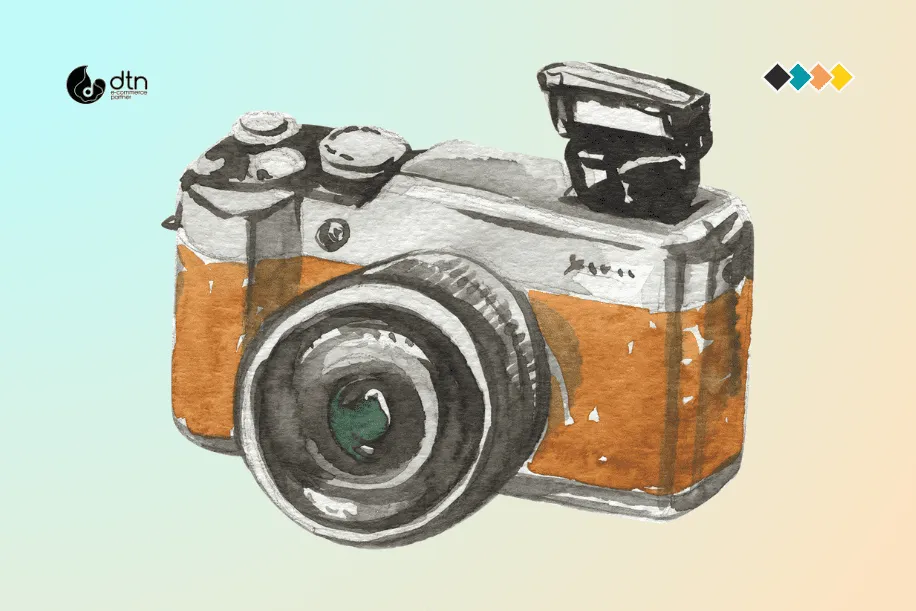Product photography is not just an afterthought – it’s a crucial element that can make or break your sales. With the inability for customers to physically examine your products, high-quality images become the primary way to showcase your offerings and entice potential buyers.
Whether you’re a seasoned pro or just starting out, these E-commerce Product Photography Tips will help you elevate your product photography and make your products shine online
Table of Contents
1. Invest in a Good Camera
While you don’t need the most expensive camera on the market, investing in a decent DSLR or mirrorless camera will make a significant difference in the quality of your images. Look for a camera with a large sensor and interchangeable lenses, which will give you more flexibility and control over your shots.

2. Choose the Right Lighting
Lighting is everything in photography, and product photography is no exception. Natural light is often the best choice, but if you’re shooting indoors or in low-light conditions, you’ll need to use artificial lighting. Experiment with different lighting setups until you find one that flatters your products and highlights their best features.

3. Use a Tripod
A tripod is essential for keeping your camera steady and avoiding blurry images. This is especially important for close-up shots or when using a slow shutter speed.

4. Style Your Products
Before you start shooting, take some time to style your products in a way that’s visually appealing and consistent with your brand’s aesthetic. This could involve arranging them in a creative way, adding props, or using a neutral background to make your products stand out.

5. Pay Attention to Composition
The composition of your photos is just as important as the products themselves. Experiment with different angles, perspectives, and framing to create visually interesting and engaging images. Use the rule of thirds, leading lines, and other compositional techniques to guide the viewer’s eye and create a sense of balance and harmony.

6. Edit Your Photos
Once you’ve captured your shots, take some time to edit them and enhance their appearance. Utilize photo editing software to fine-tune parameters such as brightness, contrast, and color balance. You can also crop the images, remove unwanted objects, and apply filters to achieve the desired look and feel.

7. Optimize Your Images for Web
When you’re finished editing your photos, make sure to optimize them for the web. This means resizing them to the appropriate dimensions and compressing them to reduce their file size without compromising their quality. By optimizing your images, you’ll ensure fast loading times and prevent your website from slowing down.

8. Use High-Quality Images
When it comes to product photography, quality matters. Avoid using low-resolution or pixelated images, as they can make your products look unprofessional and unappealing. Aim for high-resolution images that are sharp and detailed, even when viewed on a large screen.

9. Showcase Your Products in Context
In addition to close-up shots of your products, consider including images that showcase them in context. This could involve showing them being used in real-life situations or styled in different environments. This helps customers visualize how the products would look in their own homes or lives, making them more likely to make a purchase.

10. Be Consistent
Consistency is key in e-commerce product photography. Use a consistent style, lighting, and composition across all of your product images. This creates a cohesive and professional look that builds trust and credibility with your customers.
By following these tips, you can create high-quality product photography that will make your products shine online and increase your chances of converting visitors into paying customers.

Frequently Asked Questions
We’ve compiled a list of answers to common questions.
Why is investing in a good camera important for e-commerce product photography?
Investing in a good camera is important for achieving high-quality product images. Look for a camera with a decent DSLR or mirrorless camera with a large sensor and interchangeable lenses, providing flexibility and control over shots, enhancing the overall image quality.
How does lighting impact e-commerce product photography?
Lighting is crucial in product photography. Natural light is ideal, but artificial lighting can be used indoors. Experiment with different setups to flatter products and highlight features. Consistent, well-balanced lighting contributes to visually appealing product images.
Why is the use of a tripod recommended in e-commerce product photography?
A tripod is essential for keeping the camera steady, especially for close-up shots or when using a slow shutter speed. It prevents camera shake, resulting in sharp and clear images, ensuring the products are accurately represented without any blurriness.
How does styling products enhance e-commerce product photography?
Styling products before shooting contributes to visual appeal and brand consistency. This involves arranging products creatively, adding props, or using a neutral background. Attention to styling details helps products stand out and aligns with the brand’s aesthetic.
What role does photo composition play in e-commerce product photography?
Photo composition is crucial for creating visually interesting images. Techniques like the rule of thirds, leading lines, and experimenting with angles and perspectives contribute to engaging visuals. Balancing composition guides the viewer’s eye and creates a sense of harmony.
Why is photo editing important in e-commerce product photography?
Photo editing enhances the appearance of images. Adjustments to brightness, contrast, and color balance can be made using editing software. Other edits include cropping, removing unwanted elements, and applying filters to achieve the desired look and feel.
What is the significance of optimizing images for the web in e-commerce product photography?
Optimizing images for the web involves resizing and compressing to reduce file size without compromising quality. This ensures quick loading times on websites, preventing slowdowns. Proper optimization contributes to a seamless online shopping experience.
Why is showcasing products in context important in e-commerce product photography’
Showcasing products in context helps customers visualize how the products fit into real-life situations or environments. This aids in decision-making by providing a better understanding of the product’s usage and appearance in different scenarios.
How does consistency contribute to the success of e-commerce product photography?
Consistency is crucial for building trust and credibility. Maintain a consistent style, lighting, and composition across all product images. This cohesive approach contributes to a professional and trustworthy brand image.
Why is using high-quality images important in e-commerce product photography?
High-quality images are essential for a professional and appealing presentation of products. Low-resolution or pixelated images can make products look unprofessional and unappealing, potentially negatively impacting the brand’s image and customer perception.



